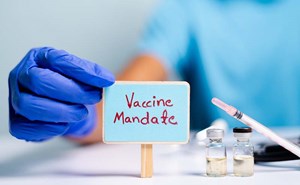Over the last few years, I have periodically updated you all on the status of the first, and only, emergency medicine-focused alternative payment model (APM), the Acute Unscheduled Care Model (AUCM)—fondly pronounced “awesome.” The goal of the AUCM is improve the ability of emergency physicians to reduce inpatient admissions and observation stays when appropriate. Emergency physicians would become key members of the continuum of care, as the model focuses on ensuring follow-up care for emergency patients, minimizing redundant post-emergency department (ED) services, and avoiding post-ED discharge safety events.
As many of you know, the AUCM was highly recommended by a federal advisory committee called the Physician-Focused Payment Model Technical Advisory Committee (PTAC) and endorsed by the former Secretary of the Department of Health and Human Services (HHS). However, ever since the former HHS Secretary endorsed the AUCM in 2019, we’ve been waiting on the Centers for Medicare & Medicaid Services’ (CMS’) Center for Medicare and Medicaid Innovation (the CMS Innovation Center) to adopt the model’s framework.
During this long waiting period, ACEP has continually tried to advance and highlight the AUCM. We launched an initiative to promote participation in emergency medicine-focused APMs (based on the AUCM) by other payors beyond Medicare. We also developed a suite of materials to educate emergency physician groups, private payors, and state Medicaid agencies about the AUCM and help key decision makers see the value of implementing an emergency medicine-focused APM. Lastly, we continue to be in conversations with some private payors about possibly incorporating elements of the AUCM into their current value-based initiatives.
Despite our ongoing work on the model, it has been disappointing to say the least that the CMS Innovation Center has not taken any active steps to implement the AUCM or even examine how to possibly include key elements of the model (like improving care coordination and safe discharges from the ED) into other APMs. One of the reasons why the CMS Innovation Center has not acted on the model has been its overall focus on primary-care based models, mainly accountable care organization (ACO) initiatives (like the Pioneer ACO model and Next Generation ACO model) and “medical home” models (like the Comprehensive Primary Care and Comprehensive Primary Care Plus models). Further, there have been multiple leadership transitions at the Innovation Center over the last few years, resulting in a constant re-evaluation of priorities.
Speaking of re-evaluating priorities, the CMS Innovation Center recently released a white paper detailing the vision for the Center over the next 10 years. Under the leadership of the Innovation Center’s new director, Liz Fowler, and the CMS Administrator Chiquita Brooks-LaSure, the Center conducted a systematic review of the over 50 APMs it has tested thus far, and based on its findings, developed a strategy to shape its future work. The vision includes the following five overarching objectives:
- Drive Accountable Care
- Advance Health Equity
- Support Care Innovations
- Improve Access by Addressing Affordability
- Partner to Achieve System Transformation
While the strategy includes many notable and ambitious goals, it is still unclear exactly what new models the Center will test or what specific modifications the Center will make to current models. The Innovation Center is currently hosting a series of webinars to gain feedback on the strategy.
Call me an optimist, but there does seem to be an opening for the AUCM in the strategy—specifically related to the first objective around driving accountable care. The aim of this objective is to increase the number of people in a care relationship with accountability for quality and total cost of care—with ultimate goals of getting all Medicare and the vast majority of Medicaid beneficiaries in “a care relationship with accountability for quality and total cost of care” by 2030.
What exactly does this mean? Well, the Innovation Center’s overall goal is for Medicare and Medicaid beneficiaries to be cared for under the primary care-focused ACO and medical home initiatives that I mentioned above. To the Innovation Center’s credit, it does make the important realization that focusing on primary care alone doesn’t lead to net reductions in the overall cost of care. To truly manage costs and improve quality of care, specialists also must be engaged—and therefore, the Innovation Center plans to “test incentives to drive coordination between providers responsible for accountable care relationships and specialty providers accountable for delivering high-cost episodic and/or complex care.”
This potential opening means that there is work for medical associations like ACEP to do. Soon after the strategy was released, ACEP sent the Innovation Center a short concept paper about how it could incorporate elements of the AUCM into an ACO initiative. In that paper, we stated that the quality, patient safety, and cost metrics, along with the safe discharge assessment tool included in the AUCM can be used by ACOs to help manage patients who come to the ED. There is a lot of opportunity for cost-savings in many Innovation Center APMs if participants better engage ED providers in helping to keep patients from coming back to the ED or from being admitted to the hospital.
We will continue to work with the Innovation Center, along with other partners, including the American Medical Association (AMA), on exploring possible ways to engage emergency physicians in current or future Innovation Center APMs—using the AUCM as a framework for accomplishing that goal.
Until next week, this is Jeffrey saying, enjoy reading regs with your eggs.






